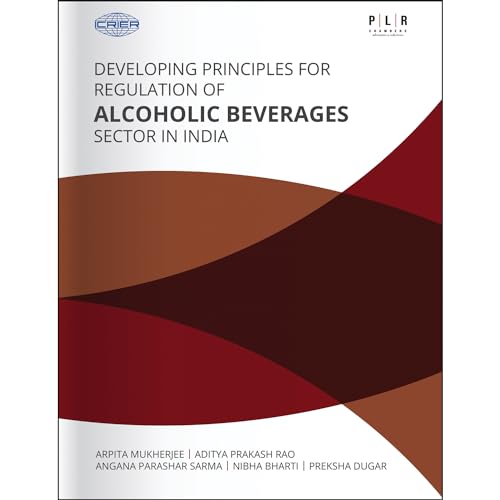Arpita Mukherjee Aditya Prakash Rao (1 results)
Product Type
- All Product Types
- Books (1)
- Magazines & Periodicals
- Comics
- Sheet Music
- Art, Prints & Posters
- Photographs
- Maps
-
Manuscripts &
Paper Collectibles
Condition
- All Conditions
- New
- Used
Binding
- All Bindings
- Hardcover
- Softcover
Collectible Attributes
- First Edition
- Signed
- Dust Jacket
- Seller-Supplied Images
- Not Printed On Demand
Seller Location
Seller Rating
-
Developing Principles for Regulation of Alcoholic Beverages Sector in India
Published by Academic Foundation, 2021
ISBN 10: 9332705704ISBN 13: 9789332705708
Seller: Vedams eBooks (P) Ltd, New Delhi, India
Book
Soft cover. Condition: New. Contents: Foreword. 1. Introduction. 2. Alcoholic beverages industry: a global overview. 3. India overview. 4. Barriers towards a uniform and transparent pricing system. 5. Impact of barriers. 6. Way forward: towards a transparent pricing model. References. Annexures. India is one of the fastest growing markets for alcoholic beverages. Various factors including a sizeable middle-class population with increased purchasing power, rapid urbanisation, changing consumer preferences, and reduction in cultural barriers to drinking, have contributed towards growth in demand for alcoholic beverages. Revenues from taxation of sales in this sector are among the top-three revenue earning sectors for the state governments and the sector generates significant direct and indirect employment. The states through their excise policies, control the entire supply chain of alcoholic beverages from manufacturing and distribution to registration and licensing processes, labelling and packaging requirements, and retail. Price control is one of the core components through which the states regulate this sector. However, the pricing policies and governance models vary across states, creating different route-to-market channels. There are frequent and ad-hoc changes in policies, creating uncertainty and deterring manufacturers/distillers to plan their businesses in advance. The variations in regulations and operating models across states have added to the compliance burden of participants across the supply chain, leading to low ease of doing business. It has resulted in India becoming a fragmented market, undermining the concept of India as a single market. Further, unlike other countries such as Chile, India has not been able to leverage its export potential in this sector, in spite of having potential. Given this background, this report, based on secondary information analysis and a primary survey provides an overview of the Indian alcoholic beverages market, highlighting market trends and contributions to the economy, the supply chain and the various routes-to-market followed across states. The report outlines the regulatory framework governing the sector, both at the centre and across states; and presents the changes effected in the regulations, sales channels and duties, among others, with the onset of the COVID-19 pandemic. The report is a first of its kind, which specifically examines regulatory and pricing related barriers and their impact on the industry, its supply chain, quality of products available to consumers and consequent effects on health, states, and the Indian economy as a whole. The aim of the report is to help the state governments to develop regulations based on certain principles which makes the regulations predictable and transparent. The report suggests the way forward on how the state governments can learn from global best practices in creating uniformity in developing their pricing models, building transparency and creating more predictable policy environment through data driven and evidence-based policymaking. If the recommendations of this paper are implemented, it can help the state governments in meeting the objectives of earning higher revenue, addressing consumer health concerns, and creating employment. The recommendations can help India in bringing in more investments in to the sector, encourage innovation, improve ease of doing business, enable Make in India , enhance exports and the country can be a key player in global value chains of alcoholic beverages.


